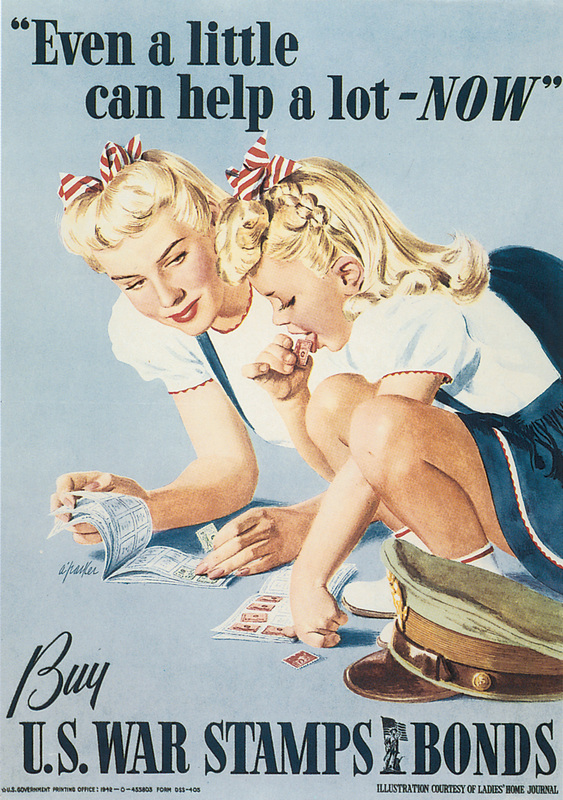Looking into the United States in World War II and specifically the representations of women in the propaganda
http://oberlinlibstaff.com/omeka_hist244/exhibits/show/homefront/propaganda
Although the war crisis led to new realms of autonomy for women on the home front, women also became targets of propaganda that emphasized women’s sexual and domestic roles in ways that limited their sense of agency during the war years. Through different and, often, contradictory avenues of propaganda women were presented as victims, domestic beings, and as threats. Wartime propaganda portrayed women as sexually vulnerable victims in danger of the hyper-sexual desires of the enemy. This cannot however be said the same for all women in propaganda as in some cases they were shown as strong or taking on man’s roles such as Rosie the Riveter.
The examples below show and discuss the representations of women I feel should be questioned and are wrong and it all shows how women were used as an object in the wartime propaganda.
Women Seen As Domestic Figures:
More so than at any previous time in the US history women were breaking out of their traditional gendered roles by participating in the labour force, join the military, wartime propaganda helped to limit them to the classic roles of mothers, faithful girlfriends who contributed to the war effort solely through domestic means.
Unlike the infamous ‘Rosie the Riveter’ posters generated during the war, much of propaganda posters became tools to emphasize the significance of women’s war effort in the domestic realm. The trope of the mother-daughter duo illustrated in posters such as ‘Even a little can help a lot -NOW’ and ‘We’ll have lots to eat this winter, won’t we Mother?” emphasize the significance of women both as domestic beings canning foods and pasting stamps and as mothers reproducing children who will become assets to society. This branch of propaganda maintains traditional femininity and domesticity, thus suggesting that when men return home from the war they will be returning to a normal life where women raise children and tend to the house while men earn money.

Mother and Daughter pasting stamps into booklets as part of the war effort
Women as Victims:
One way in which women’s sexual and domestic roles became defined by propaganda was through propaganda designed to encourage enlistment and the purchase of war bonds by depicting the outcome on the home-front if the US were to lose. The main theme that the propaganda campaign chose to focus on was the effects of the war on women. The majority of this propaganda portrayed women in one of two ways. First, and more frequently, women were depicted as young, innocent victims of sexual violence inflicted by hyper-sexual enemy soldiers. The other way in which women were illustrated was as helpless mothers clinging to their children as enemy violence threatens to annihilate them and their homes. Both of these depictions reduce women’s agency as passive participants in the war effort and illustrate them solely as vulnerable victims of enemy violence.
Not only does the war bonds campaign provoke fears about mother and, thus, family vulnerability in the face of the enemy, but it also emphasizes the susceptibility of young American women to the hypersexual desires of enemy men. Once again, the narrative of American men needing to defend and preserve the honor and morality of American women is used to benefit the war effort.

Poster of a terrified mother clinging to child as a bomber flies overhead
Women As A Threat:
In contrast to posters of women as the weak, vulnerable victims of sexual desires, an entire campaign designed to fight venereal diseases (VD’s) recast women’s sexuality as a threat to soldiers the nuclear family, and, thus, the nation. This poster campaign often illustrated women as “bad girls”—dangerous and “loose,” in contrast with other campaigns depicting the “good girl” image of smiley mothers and housewives. The venereal disease propaganda is particularly gendered both in who appears on posters and who the targeted audience is.
The fact that women are demonized based on their sexual behaviors illustrates the larger societal need to control women’s morality and sexuality. Instead of being liberating, women gaining more autonomy over their bodies became a threat to the fundamental values of the American nuclear family. Women who were sexually active did not fulfill their traditional gender role and became outcasts who were looked down upon for having ‘loose’ morality.

Poster of a woman who supposedly has a venereal disease trying to entice an American soldier
